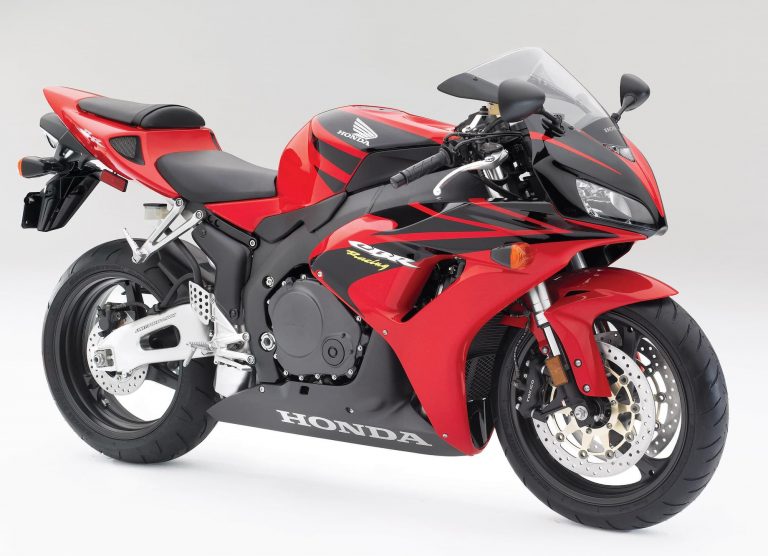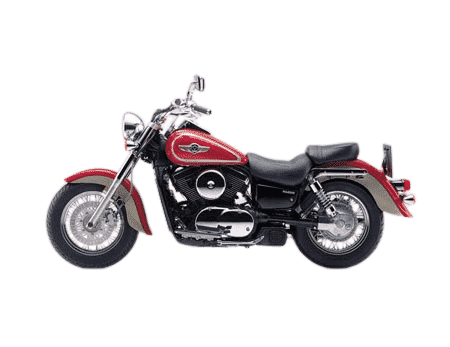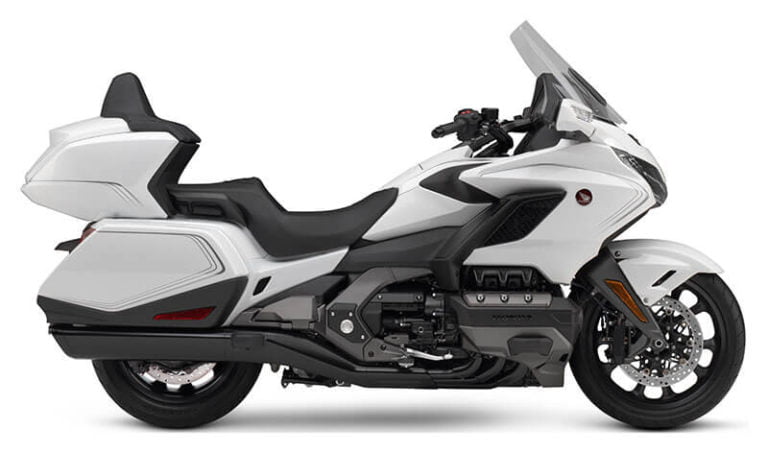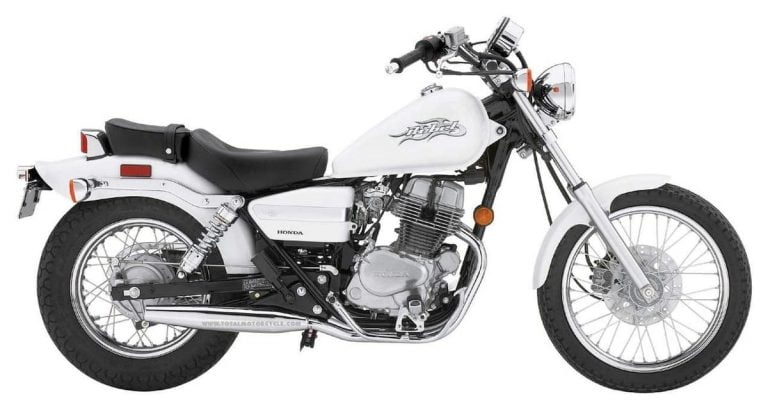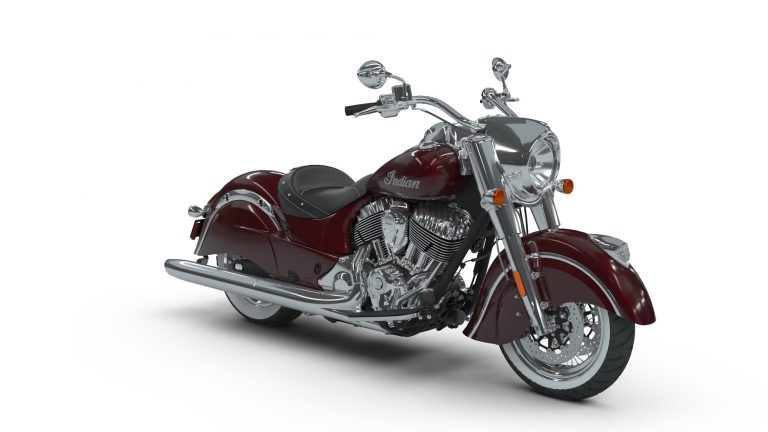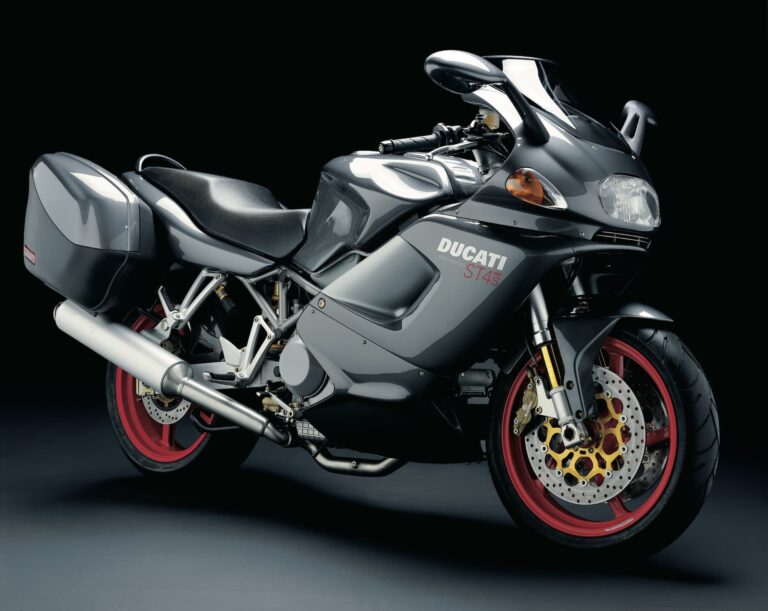Honda CB125E (2012+) Maintenance Schedule and Service Intervals
This is the maintenance schedule and service intervals for the Honda CB125E, an entry-level commuter bike from Honda that’s sold in a few markets around the world, and popular for general exploring, delivery, and commuting.
You can occasionally the Honda CB125E them going on the highways that are rated at 100 km/h… but they don’t stay there for too long, and they tend to stay in the left-most lane anyway.
The CB125E is powered by a 124cc carburettor-fed air-cooled single-cylinder engine that makes 7 kW (10hp). It puts power down via a five-speed gearbox and chain drive. It’s a basic bike… single disc up front, and the rear brake is a drum brake! But the total kerb weight is 137 kg and normal riding will see you using around 3L/100 km.
It may seem like it’s a variant of the Honda Grom due to the similar capacity engine, but that’s actually a much more advanced motorcycle (with fuel injection, for starters). The Grom is also quite a bit more expensive.
Updated 2023 with a simplified maintenance schedule for the Honda CB125E, chain maintenance guidelines, and how to check and adjust the valve clearances.
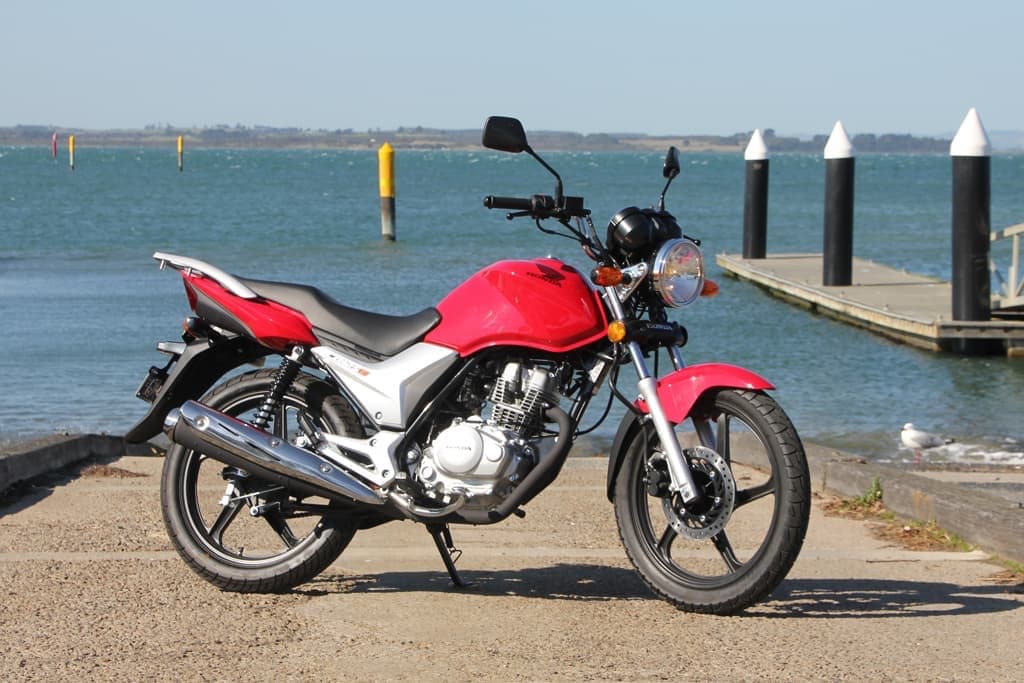
This site has links for things like oil and spark plugs from which we earn a commission (which unfortunately nobody can save, not even us). If you appreciate this work, then please use those links. Thanks!
Service Intervals for the Honda CB125E
As a basic motorcycle, the Honda CB125E has fairly frequent 2,500 mile / 4,000 km service intervals. At every service, change the engine oil, and check the valve clearances.
Because you have to check the valve clearances so often, and because it’s relatively easy, guidance for how to do it is provided in the manual! We’ve reproduced that below.
Other than that, do once-overs of the bike regularly. Change the spark plug every 5,000 miles / 8,000 km. And keep the chain clean and tensioned.
What you need to service your Honda CB125E
Doing your own service on the Honda CB125E is part of the ownership experience. But what oil, spark plugs etc. should you use? Apart from general standard motorcycle maintenance tools, here’s what you need to service your Honda CB125E.
| Part | Honda CB125E Spec |
|---|---|
| Oil | Honda recommends SAE 10W-30 oil that’s API classification SG or higher or JASO T 903 standard MA or higher. There are a lot of oils that fit the bill, but Honda recommends Pro Honda GN4. Note — there’s no oil filter to change on the CB125E, just an oil spinner to clean out (see the schedule below) |
| Spark plug | Manual specifies NGK CPR7EA-9. |
| Brake fluid | The manual specifies DOT 3 or DOT 4, but recommends Honda DOT 4 brake fluid. |
| Air filter | Honda part number for the air filter is 17211‑KVC‑680. |
| Chain maintenance | Service your chain regularly! Either use a Motul chain care kit, or with Motul chain paste. |
| Grease | Use lithium soap-based grease and silicone grease for external pivot points, like the sidestand and bearings. |
| Brake pads | You need one pair of brake pads for the front, and brake shoes for the rear. It’s easiest to get these directly from a Honda dealer. |
Honda CB125E Maintenance Schedule
Below is the maintenance schedule for the Honda CB125E, broken up into three parts.
Pre-ride checks
The manual specifies that you should check the following things before every ride. These are mostly common sense things that you check as soon as you start up the bike and set off from the lights. However, it’s good practise to check the engine oil level, at least.
| Honda CB125E — Pre-ride checks |
|---|
| Fuel level |
| Throttle Operation |
| Engine oil level (Pro Honda GN4) |
| Drive Chain is in good condition, recently lubed/cleaned |
| Brake Fluid (disc brakes only) (Honda DOT 4) |
| Brake pad/shoes wear |
| Lights/horn |
| Engine stop switch |
Maintenance Schedule
Below is the maintenance schedule for the Honda CB125E.
Notes:
- At higher odometer readings, repeat at the frequency interval established here. The maintenance schedule only goes up to 12,000 km. No, you don’t just throw it out after that!
- Honda recommends getting the steering and brakes serviced by professional mechanics (presumably because of risk)
| x 1000 mi | 0.6 | 2.5 | 5 | 7.5 | 10 | |
|---|---|---|---|---|---|---|
| x 1000 km | 1 | 4 | 8 | 12 | 16 | Every |
| Engine Oil — Replace (Pro Honda GN4) | ✓ | ✓ | ✓ | ✓ | ✓ | Year |
| Valve clearances — Inspect / Adjust | ✓ | ✓ | ✓ | ✓ | ✓ | |
| Standard service checklist — Perform * Not all items necessary, but they’re easy to do. | ✓* | ✓ | ✓ | ✓ | ✓ | |
| Engine Oil Strainer Screen — Clean | ✓ | |||||
| Engine Oil Centrifugal Filter — Clean | ✓ | |||||
| Spark plug — Inspect | ✓ | ✓ | ||||
| Spark plug — Replace (CPR7EA-9) | ✓ | ✓ | ||||
| Air cleaner — Replace | ✓ | |||||
| Fuel lines — Replace | 2 years | |||||
| Secondary air supply system — Inspect Replace pair filter every 3 years. | ✓ | |||||
| Brake Fluid — Replace (Honda DOT 4) | 2 years | |||||
| Steering Head Bearings — Inspect / tighten as needed | I | ✓ | Year |
Standard service checklist for the Honda CB125E
Do the following checks on your Honda CB125E as part of every scheduled inspection.
| Honda CB125E Inspection Checklist |
|---|
| Fuel Lines — Check condition, correct routing, and for no cracks |
| Fuel strainer — Clean |
| Throttle operation and free play – Lubricate with Protect all cable life Target free play: 2-4 mm (0.1-0.2 in) |
| Carburettor choke — check operation |
| Engine Idle Speed — Check / Adjust Target idle speed: 1,400 rpm, +/- 100 rpm |
| Clutch system — Check for correct function, and clutch free play Clutch free play: 10-20 mm / 0.4-0.8 in |
| Brake fluid — Inspect level |
| Brake system — Check for proper function Brake lever free play: 10-20 mm / 0.4-0.8 in Brake pedal ree play: 20-30 mm / 0.8-1.2 in |
| Brake light switch — Check lights come on |
| Wheels/Tires — Check for dents, tire condition, tread depth |
| Suspension — Check for smooth operation, no leaks |
| Headlight aim — Check, re-adjust after adjusting suspension |
| Side stand — Check for smooth function, lubrication condition |
| Nuts, bolts, fasteners — Check for presence. Replace / retighten as needed |
| Crankcase breather (if fitted) — Check, clean as needed |
Maintaining Your Chain on the Honda CB125E
It’s important to maintain your chain on the CB125E, as it’s a commuter that tends to get beaten up. On many examples, chains are neglected, despite lots of riding in rain or through puddles.
Use a good-quality chain lubricant like Motul chain paste, or a Motul chain care kit which comes with a couple of handy tools to maintain the chain.
Honda also says you can use SAE 80 or 90 gear oil, if you have that around. Make sure you wipe the chain clean so it doesn’t fling oil all over the rear tyre.
Honda recommends you follow the following chain maintenance schedule:
| Chain maintenance item | Every |
|---|---|
| Check drive chain lubrication condition, lubricating if necessary | 600 mi / 1000 km |
| Check drive chain slack, adjusting if necessary Target slack: 20-30mm | 600 mi / 1000 km |
Notes:
- Do these items (checking/adjusting slack, and checking/applying lubrication) more often if you ride your CB125E in dusty or rainy conditions.
- Always lubricate the chain after washing the motorcycle.
To measure the slack on the Honda CB125E, measure the total deflection of the chain, in the middle of the bottom. Use a steel ruler and a screwdriver, and push the chain up and down to measure how far it moves. The movement (slack) should be 20-30mm.
If it’s too loose, tighten it with this procedure.
- Loosen the rear axle and the adjuster lock nuts on either side of the swing arm.
- Turn the adjuster nuts to tighten (or loosen) the chain. Keep checking the chain tension to see if it has come within spec.
- Keep an eye on the adjuster alignment marks on either side of the axle, to maintain chain alignment.
- When you’re done, tighten the axle to 68 Nm / 50 lb-ft, and tighten the adjuster lock nuts lightly.
- Re-check the chain slack again to make sure it’s still within spec.
Honda CB125E Valve Clearance Service
Honda recommends checking and adjusting the valve clearance on the Honda CB125E at every oil change — every 2,500 miles or 4,000 km.
Wait until the engine is cold, and follow the following procedure.
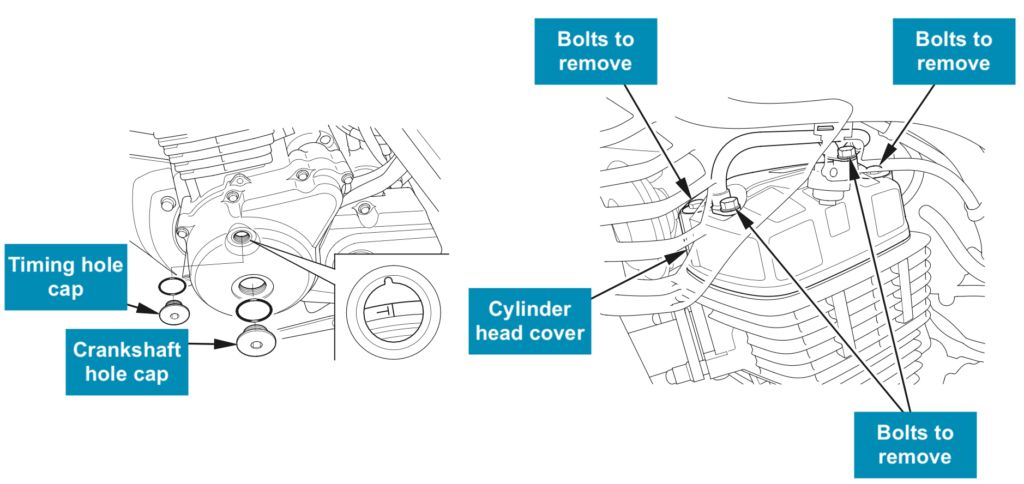
- Remove the crankshaft hole cap and timing hole cap.
- Remove the bolts atop the cylinder head
- Remove the cylinder head cover.
- Rotate the generator flywheel counter- clockwise until the T mark on the flywheel lines up with the index mark on the crankcase.
- Make sure the piston is at the top of the compression stroke rather than the exhaust stroke. To check this, move the rocker arms. If they’re free, then the valves are closed, and the piston is on the compression stroke. If they’re tight, the valves are open; rotate the flywheel another 360 degrees, and check for the alignment again.
- Use feeler gauges to measure the valve clearances between the adjusting screw and the valve stem.
Valve clearances for the Honda CB125E:
- Intake: 0.08 mm / 0.003 in
- Exhaust: 0.12 mm / 0.005 in
If you have to make an adjustment, follow the procedure below.

- Loosen the adjusting screw lock nut
- Turn the adjusting screw until there’s slight resistance when the feeler gauge is in place.
- Tighten the adjusting screw lock nut to 14 Nm / 10 lb-ft.
- Re-check the clearances to make sure it didn’t change during tightening.
- Install the remaining parts in the reverse order of removal.
Tyre size and tyre pressure for the Honda CB125E
The manual for the Honda CB125E specifies these tyre sizes, says the CB125E ships with these tyres, and recommends the following tyre pressures (when cold):
| Tyre | Size | Brand(s) | Tyre pressure |
|---|---|---|---|
| Front | 80/100-18 M/C 47 P | Kenda K291F | 200 kPa (29 psi) |
| Rear | 90/90-18 M/C 51P | Kenda K328X | 225 kPa (33 psi) |
The Honda CB125E, as standard, uses tube-type tires.
About the Honda CB125E
Above everything else, the Honda CB125E is an economical bike.
The Honda CB125E is
- Cheap to get on the road
- Cheap to gas up, and
- Cheap to maintain (especially if you learn how to do it. yourself).
Even if you’re hard on the throttle, wringing the most out of it (as us more experienced motorcycle riders are wont to do), you won’t use more than 3.4L/100 km, or roughly infinity miles per gallon. Normal riding would be more like 2-3.
The first thing many will tell you when you show them your CB125 is “cute”! And the second or third thing is… will that let you get up to speed?
The fact is that you do have to work the Honda CB125E hard. Going up hills you’ll have to knock it down a gear or two. And on the freeway, you have to get into a tuck to maintain top speed. And you should probably not be in the rightmost lane.
But around town, particularly if you’re a delivery rider (or maintaining a fleet of delivery vehicles), the Honda CB125E is extremely economical, reliable, and quick to repair.
On repairs — for those of you just getting started in the dark arts of motorcycle maintenance, the CB125E is an almost perfect platform to learn on.
- Parts are available from everywhere.
- It’s a carburettor-fed single, so you get to maintain bikes the way they used to be made (before moving on to the complexities of fuel injection)
- There’s only one cylinder, so fewer things to keep in spec.
- If you blow it up, it’s not a very expensive lesson
While there are many other cheap bikes, if reliability and economy was my priority, the Honda CB125E would easily be my first choice.
And once you’re done with it, you can move on to a CB300F.
Manual for the Honda CB125E
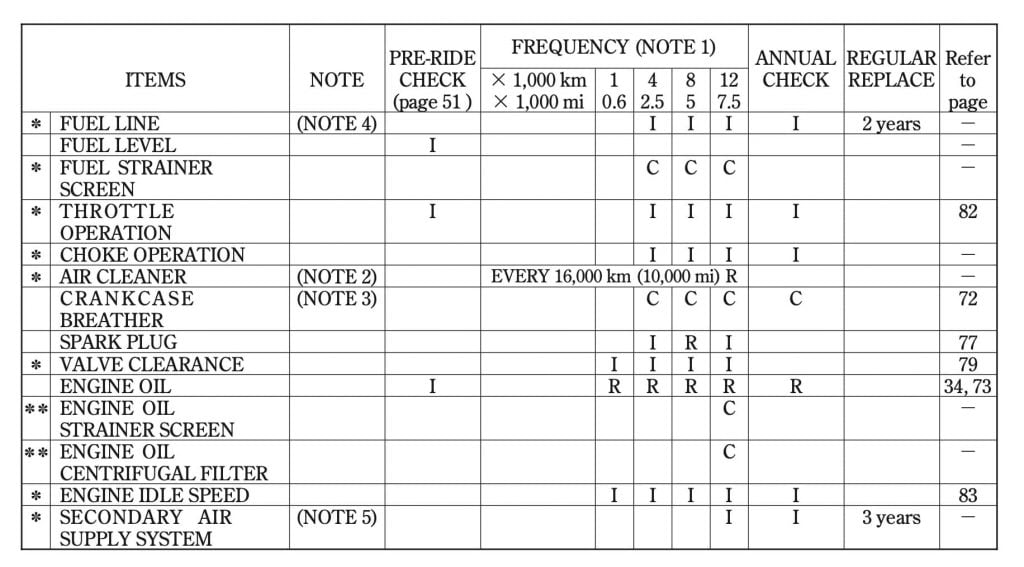
The above maintenance schedule comes directly from the user’s manual for the Honda CB125E. We checked the earlier manuals for changes.
You can download it directly from Honda.
